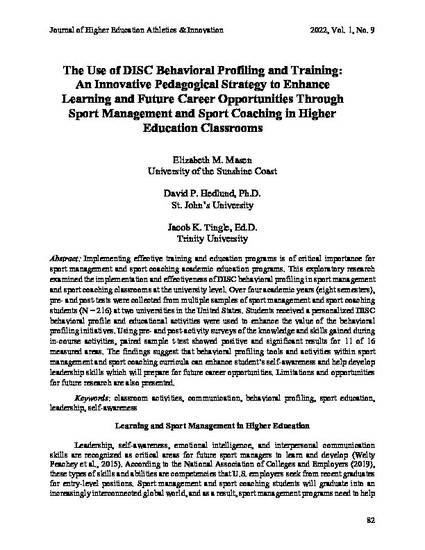
Implementing effective training and education programs is of critical importance for sport management and sport coaching academic education programs. This exploratory research examined the implementation and effectiveness of DISC behavioral profiling in sport management and sport coaching classrooms at the university level. Over four academic years (eight semesters), pre- and post-tests were collected from multiple samples of sport management and sport coaching students (N = 216) at two universities in the United States. Students received a personalized DISC behavioral profile and educational activities were used to enhance the value of the behavioral profiling initiatives. Using pre- and post-activity surveys of the knowledge and skills gained during in-course activities, paired sample t-test showed positive and significant results for 11 of 16 measured areas. The findings suggest that behavioral profiling tools and activities within sport management and sport coaching curricula can enhance student’s self-awareness and help develop leadership skills which will prepare for future career opportunities. Limitations and opportunities for future research are also presented.
